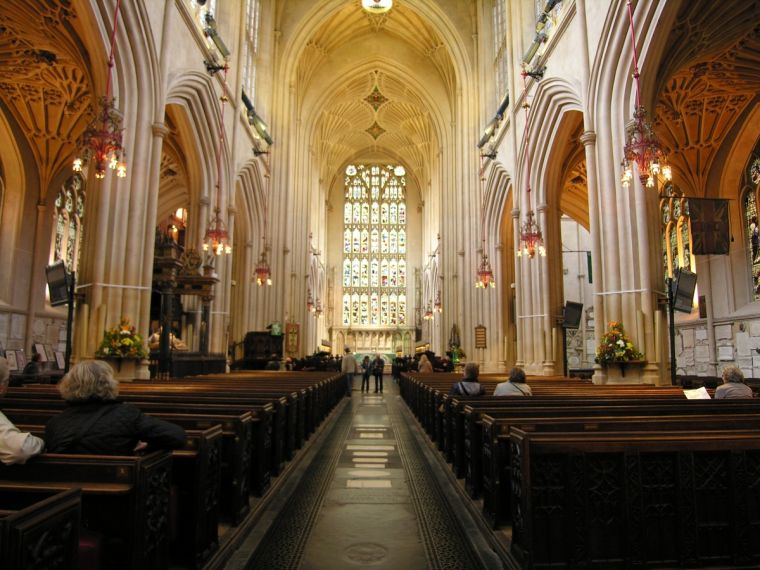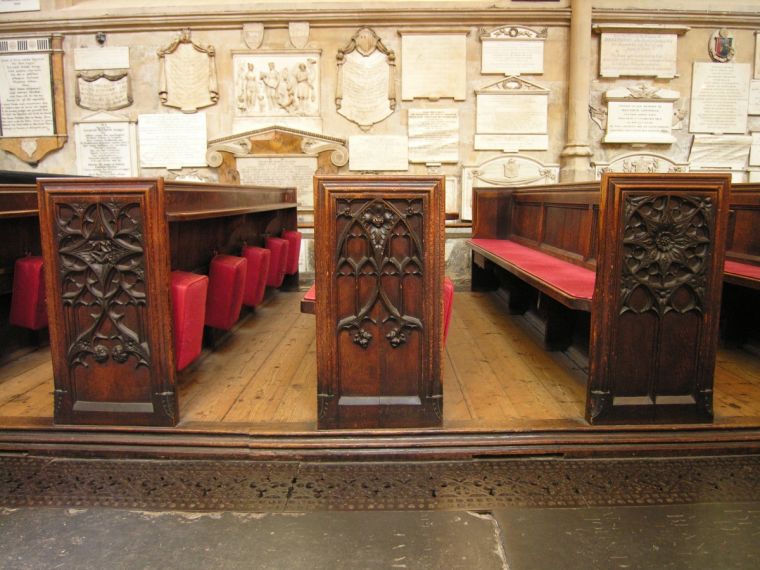What Is More Important In Church – Comfy Chairs Or Historic Carved Pews?

Many of us have sat for long hours in services in one of these beautiful near-empty old churches with rows and rows of gleaming polished pews, and longed for a cushion.
We've probably also all been to beloved historic churches such as Holy Trinity Brompton, where the pews have long since disappeared, and where it is tempting to relate congregations teeming with young people to the movable, comfy chairs.
We all want churches to thrive and grow. It is much harder for them to do that when they're stuck with line upon line of regimented hardwood that makes kneeling for prayers or standing up for hymns a blessed relief.
So surely it is no contest when an historic church such as Bath Abbey asks permission to remove the pews.
Yes, but.
Bath Abbey is Grade-1 listed.
And these pews were designed by the famous architect Sir George Gilbert Scott.
They might not be quite as grand as Betjeman's
'..high box pews of Georgian days
Which screen us from the public gaze.'
And it is certainly fair from the Abbey's point of view that 'altar, font and arch and pew' should be there for more than just:
'So that villagers can say
"The Church looks nice" on Christmas Day.'
But Poet Laureate John Betjeman loved Bath – and not just its famous teashop.
According to the Victorian Society, removing them would have 'an extremely detrimental effect on the historical significance of this important religious building'.
And in fact Bath Abbey is not all empty on Sundays. It is thriving.
Scott was the architect of St Pancras Station.
I remember the days of the decrepitude of St Pancras, walking past that glorious architecture with my mother who wondered when it too would be knocked down and the site share a modernist red-brick fate like that of the nearby British Library. 'Progress' seemed unstoppable and we all knew it was only a matter of time.
Yet somehow, St Pancras was saved and renewed – and the glory of Scott saved for our children's generations.
Christopher Costelloe, Victorian Society Director, said: 'The last decade or so has seen Victorian church schemes ripped out all over the country and once they're gone they're gone for good.'
Scott's restoration of Bath Abbey in 1859-74 was intended to 'complete' the church as it would have been if the Reformation had not stopped its construction.
Bath Abbey retains an almost complete set of Scott furnishings. The nave pews are unique to the Abbey and are modelled on those in other 16th century Somerset churches.
Bath Abbey has secured Heritage Lottery Funding of £12.1 million for a plan which includers removing the nave pews. The Abbey understandably wants space for a more flexible style of worship and also to accommodate disabled people.
The Victorian Society believes this could be done by greater use of the transepts which are already empty and has launched a petition, already signed by hundreds, to save the pews.
With such a coherent case made by the Abbey, including the need for a more flexible space to stage performances, it is hard to see how the conservationists can win this one.
Nevertheless it is difficult not to shed a tear for the passing of the pews.
Betjeman loved Bath with all the passion we read in his poetry and was even a trustee of the Bath Preservation Trust for 20 years. He extolled the city's Victorian and Georgian architectural beauty in a television documentary, Architecture of Bath. He has passed – and so much of what he loved is passing too.
At the very least, let's not sacrifice all our ecclesiastical beauty to modernity, without proper respect being somehow given to the beauty of the carved poetry of its very being.












